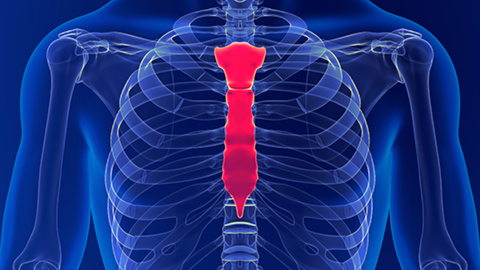
A client who was recently in a motor vehicle accident experienced pain during her massage session, even with lightened pressure. Even though she had been “cleared for massage” by her primary care provider (PCP), it turns out she had no X-rays, and unfortunately she had sustained a fracture to her sternum during the accident. Getting massage “clearance” from a PCP are fighting words for Ruth, because according to her “They don’t know your massage.” Listen as Ruth dives into the complexities of the situation and the nuances of this particular case that make it a fascinating example of an experience that MTs are likely to see in their practices.


This episode sponsored by Anatomy Trains and Yomassage and Books of Discovery.
00:00 Speaker 1: Ruth Werner's best-selling book, A Massage Therapist's Guide to Pathology, is a highly regarded comprehensive resource that sets the standard for Pathology Education. Written for massage therapy students and practitioners, this ground-breaking resource serves up a comprehensive review of the pathophysiology, signs, symptoms, and treatment of more than 500 diseases and disorders. Learn more at booksofdiscovery.com.
[music]
00:39 Speaker 2: Hi and welcome to I Have a Client Who, Pathology Conversations with Ruth Werner, the podcast where I will discuss your real-life stories about clients with conditions that are perplexing or confusing. I'm Ruth Werner, author of A Massage Therapist's Guide to Pathology, and I have spent decades studying, writing about, and teaching about where massage therapy intersects with diseases and conditions that might limit our client's health. We almost always have something good to offer even with our most challenged clients, but we need to figure out a way to do that safely, effectively, and within our scope of practice. And sometimes, as we have all learned, that is harder than it looks.
01:25 S2: In this episode, we'll talk about a massage therapist who had a client from a very small town, and some interesting and unusual things that came about through their work together. This person shares, "I have a client who had a motor vehicle accident in which her torso impacted the steering wheel because she was not wearing a seat belt. She saw her primary care provider and was cleared for massage, but when she got on my table, she could not tolerate any pressure on her back at all. She just said, 'It hurt too much.' So I lightened way up, I finished the massage and re-booked. The next time she came in, she still couldn't tolerate any pressure. I asked if she'd had any x-rays done and she said, 'No, they were not done.' So with her permission, I called her primary care provider and asked if they'd be willing to take x-rays. Well, it turns out her sternum had a hairline fracture, running from superior to inferior." Boy, there's a lot to talk about here, but I will add one thing. When I followed up on this further, I learned that this client was 21 years old and had six-month-old twins, and that will have repercussions for her recovery prognosis as we will explore very shortly.
02:51 S2: At this point, I wanna thank the massage therapist from Washington State who shared this story. And I wanna invite you to share your I Have a Client Who stories. You can do that by writing a few sentences about your client, clear out any identifying information and send it to me at ihaveaclientwho@abmp.com, that's ihaveaclientwho, all one word, all lowercase @abmp.com. So in this story, we have a few interesting things going on. One is this unique kind of injury, which is the fracture to the sternum, but we also have the added twist of the relationships between the massage therapist, the client and the doctor, and how that all played out for the benefit of the client. So let's start by talking just a little bit about fractures of the sternum. So, I'm sure you will be aware that a fracture is just a way of talking about a broken bone. In this case, this was described as a hairline fracture that went from superior to inferior of the sternum. It turns out that fractures of the sternum are not that uncommon in motor vehicle accidents, especially when it's a front-on accident, and if there is neither a seat belt nor an airbag deploying. This accounts for somewhere between 60% to 90% of all sternum fractures.
04:24 S2: And if you're interested in this, if you have clients or you yourself have been through something like this, in the show notes, I have provided some links to some interesting information about sternum fractures, there's a picture of one from Wikimedia, although that illustration shows a transverse fracture where the one that's described in this story went superior to inferior, all the way along the length of the sternum. Sternal fractures heal very slowly. And when I was looking at what the treatment options are for this, what I learned was a person with this kind of fracture can expect to have a lot of pain and limitation related to this bone injury for anywhere from eight to 12 weeks or more. In fact, this young woman who had six-month-old twins was told she really should not pick up her babies for at least six months or she'd be at risk of injuring her sternum even further. That led to some really interesting challenges for her and her body mechanics and ergonomics, and in fact, her massage therapist was able to help her figure out some ways that she could take care of her babies while dealing with this fracture.
05:36 S2: What's interesting as well is that this was such a young woman. It turns out that sternal fractures are much more common in older people, women slightly more often than men, not sure why that's true. We don't see them that often in younger people, generally, because the whole thoracic cage is a lot more elastic and bouncy. So this is a bit unusual for this person to end up with a sternal fracture, which may explain why she didn't get follow-up from her doctor after her motor vehicle accident, that might explain why he did not call for x-rays. It's worth pointing out that sternal fractures may happen in conjunction with substantial bruising to the lungs or the pericardial sac or even the heart itself, and that's why it was surprising to me that she hadn't had this kind of follow-up care until I learned how young she was. It sounds like this client didn't have those kinds of complications.
06:30 S2: So that's just a little bit of information about sternal fractures. They hurt like crazy. They heal extremely slowly. There's no particular surgery or treatment for them other than rest and painkillers. And because being on a massage table may put pressure on the sternum, regardless of whether someone's face up and receiving work to the chest or face down and receiving work to the back, fitting massage into this picture may be quite challenging. But what I really wanna point to in this discussion, is the word clearance. The therapist said the client saw her primary care physician and "was cleared for massage." Anyone who has spent any time with me in the classroom or in Facebook discussions or who has read my stuff is probably aware that for me those are kind of frightening words. It is not the job of any primary care physician to know what your massage looks like. And so if this client got her post-accident check-up and said, "I have a massage scheduled. Is it okay if I go ahead and do that?" And the doctor said, "Yeah, sure, go ahead. You don't have any reason not to." A, that turned out not to be true, because she had a fractured sternum that hadn't been identified, but B, he doesn't know what kind of massage we do.
08:00 S2: Think about if this had been something really intrusive, like a shiatsu or a massage therapist who wasn't great at listening to client feedback about pain and eliciting the right kind of feedback, this woman could have sustained some significant injury, even though she had been "cleared for a massage" by her doctor. And so when we use terminology like that, "They've been cleared for massage. The doctor gave permission to receive massage. I have a doctor's note for massage. Even my doctor prescribed massage," if there is some situation present where the client is at risk for injury related to massage therapy, that kind of message from their primary care physician, verbal or on paper or electronic, does not make things safe. And it doesn't clear the massage therapists from any threat of litigation or responsibility or blame. One of the things I do in my job is I act as an expert witness or a consultant sometimes in litigation cases where massage therapists have been accused of causing harm to clients through careless work. And I have served on more than one case where there was this specific direction from a primary care provider that this person should receive massage and that person was injured and that massage therapist was responsible for that, the doctor too, but a doctor's note or permission or clearance does not clear a massage therapist of responsibility.
09:43 S2: And that's really the main message I wanna get across here. If you do work with people who have come through motor vehicle accidents, and that's a specialty for you, and that's the kind of work I did for many years, the chances are good, you will have a client with an injured sternum at some point, and that's fine. We need to obviously be careful about pain sensation and positioning, but we also need to understand that a doctor's prescription or a doctor's note does not absolve us from responsibility. And I hate to end this on a down note like that, so what I do wanna offer is how powerful we are to understand that even though we may have advice and the ability to consult with our client's healthcare providers and be part of a really highly functional team, we also are allowed to make our own decisions about whether massage therapy is safe or not, if we're being told it's safe, and we're not sure. So on that happy note, let's wrap it up and I will look forward to hearing from you.
10:51 S2: Hey everybody, thanks for listening to I Have a Client Who, Pathology Conversations with Ruth Werner. Remember, you can send me your I Have a Client Who stories to ihaveaclientwho@abmp.com, that's ihaveaclientwho, all one word, all lowercase @abmp.com. I can't wait to see what you send me and I'll see you next time.
[music]
11:21 S1: Yomassage is now offering ABMP Podcast listeners $100 off their 25-hour certification from now until September 1st with the code ABMP100. Don't miss this opportunity to take advantage of the biggest discount Yomassage has ever offered. Yomassage is revolutionizing the wellness industry by combining therapeutic touch, mindfulness, and restorative stretch. Take your career to the next level and become a certified Yomassage therapist. Learn more at yomassage.com.
12:00 S1: Anatomy Trains and the Laboratories of Anatomical Enlightenment are excited to invite you to Dissection Livestream, a regional and layered journey through the human body with Tom Myers and Todd Garcia. New dates coming soon. Student Jan Ball who attended the last dissection says, "The whole live stream dissection course was truly a unique educational experience. It was profoundly moving. I gained so much from it. It was one of the most valuable educational opportunities that I've had. I'm truly grateful to Tom, Todd, and the whole team of people involved who made this unique opportunity available." This experience will be delivered through Zoom webinar with high quality audio and video, multiple perspectives, and time for questions. Visit anatomytrains.com for dates and details.